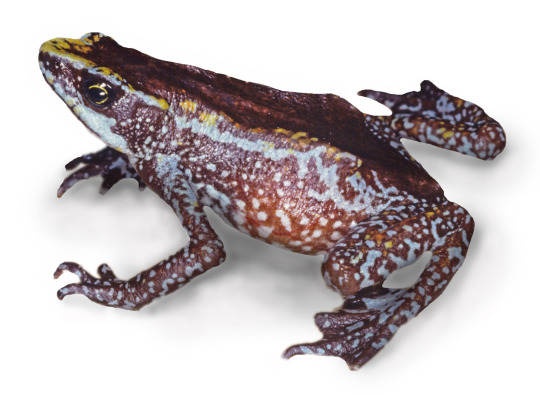"There is no survivor, there is no future, there is no life to be recreated in this form again"
Don't wanna be here? Send us removal request.
Text
Schomburgk’s Deer
Rucervus schomburgki

Native to central Thailand. Males were known to have up to 33 points on their antlers.
Schomburgk’s deer was likely driven to extinction due to habitat loss and hunting. Most of their swampy grassland habitat was converted for rice cultivation and during the rainy season herds were forced to congregate on small areas of dry land which made them very easy to hunt.
The species is thought to have become extinct in the wild in 1932 and completely extinct in 1938 when the last captive individual died. Antlers potentially belonging to a Schomburgk’s deer were discovered for sale in Laos in 1991, but in the absence of any other evidence of surviving individuals the species was assesses as extinct in 2006.
1 note
·
View note
Text
Oeceoclades seychellarum

An orchid native to Mahe in the Seychelles. Very little is known about this species, with only one specimen ever collected. It was likely driven extinct by habitat loss and nonnative plants.
It was assessed as extinct in 2011.
0 notes
Text
Navassa Rhinoceros Iguana
Cyclura onchiopsis or Cyclura cornuta onchiopsis

Native to Navassa Island in the Caribbean, this species was likely driven extinct by a number of anthropogenic factors, including hunting, guano mining, habitat change due to military operations, or introduction of nonnative dogs, goats, and rats.
Assessed as extinct in 2010, though the species had not been found on the island since 1966.
Since this is a long-lived species and Cyclura iguanas are popular in the pet trades, it’s possible that some individual animals survived in human care even after the species was formally determined to be extinct.
0 notes
Text
Chiriqui Harlequin Frog
Atelopus chiriquiensis

The Chiriqui harlequin frog was found along mountain streams and rivers in Costa Rica and western Panama.
The species was once considered common and is suspected to have been driven to extinction by chytrid fungus like so many other South American frogs. Introduced fish and habitat loss may have also contributed to its decline.
The species was assessed as extinct in 2019.
51 notes
·
View notes
Text
St. Helena Olive
Nesiota elliptica

Native to the cloud forests of St. Helena Island, it was the only member of its genus. Its extinction was caused by deforestation and grazing by nonnative species.
The flowers were thought to be pollinated by a native hoverfly species, which survives to this day.
When only one wild tree remained, conservationists attempted to revive the species--but only a single cutting survived. The last wild tree died in 1994 and seedlings from the cutting survived in human care until 2003. Termites and a fungal infection caused the death of the last St. Helena Olive.
A sample of the tree’s DNA is kept in the Kew Gardens DNA bank.
1 note
·
View note
Text
Bennett’s Seaweed
(Vanvoorstia bennettiana)

A species of red algae native to areas in and around Sydney Harbor in Australia.
Assessed as extinct in 2003. Causes of extinction were heavy human disturbance of its habitat, especially pollution and siltation.
Prior to 2007 it was the only protist on the IUCN Red List.
0 notes
Text
This blog is a catalogue of every species categorized as extinct on the IUCN Red List
Unless otherwise stated, all information and photos come from the IUCN Red List listing or Wikipedia.
0 notes
Text
Pachnodus velutinus

A species of land snail native to the Seychelles.
Assessed as extinct in 2006.
Likely causes of extinction were agriculture, invasive species/diseases, and drought. Hybridization with other closely related species may also have been a contributing factor.
9 notes
·
View notes